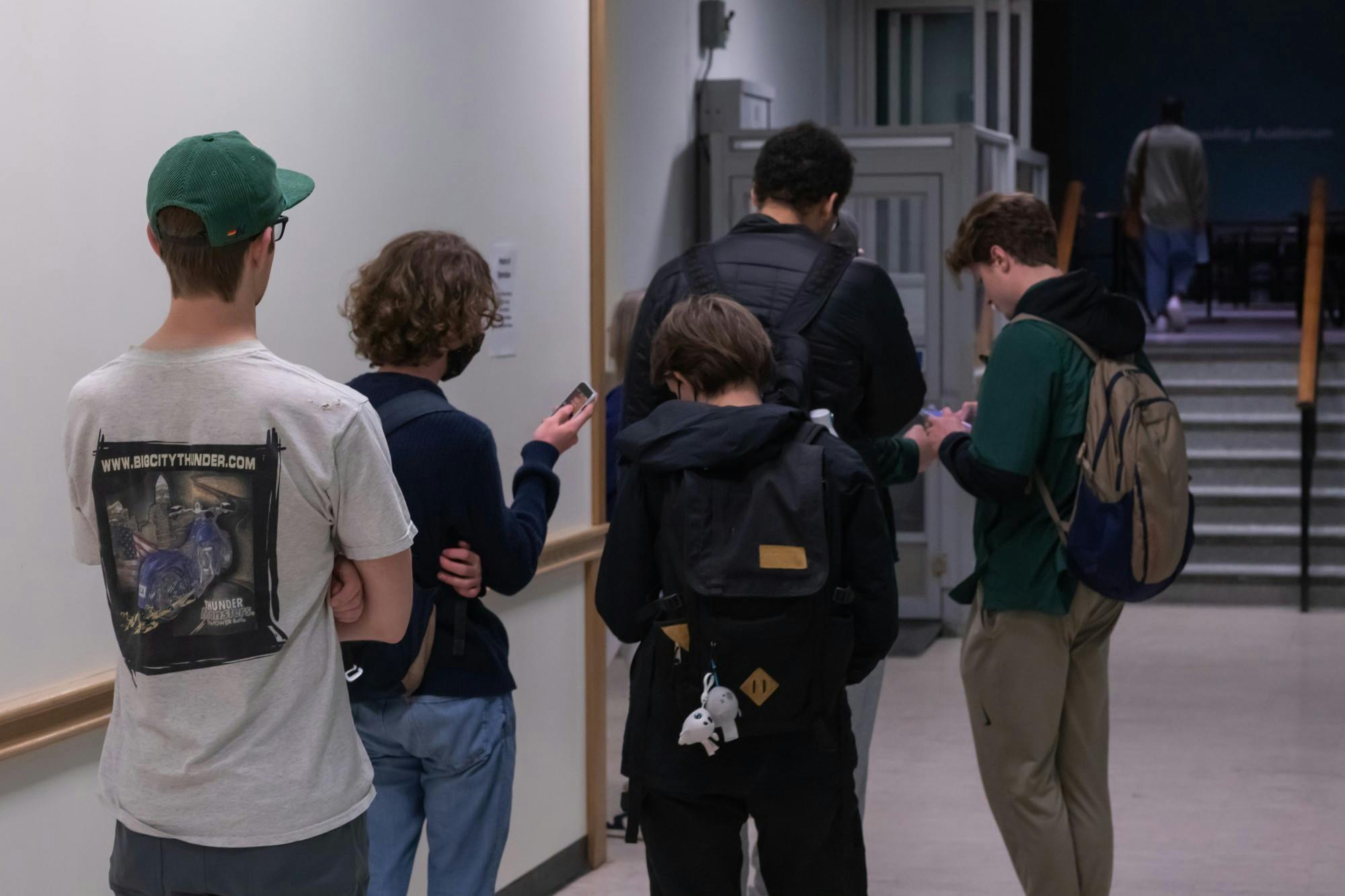Line@Dartmouth, an app which tracks wait times at dining locations around campus and usage levels of study spots around campus, such as in Baker-Berry Library, was released to the public on the App Store in March. The app currently monitors four dining locations — the Class of 1953 Commons, Collis Cafe, Novack Cafe and Ramekin — as well as second and third floor Berry and Hinman Mail Center.
A group of six students — Jai Smith ’22, Jared Cole ’22, Sanjana Goli ’22, Ian Hou ’22, Arjun Srinivasan ’22 and Sasha Rich ’22 — created the app to complete their final capstone project for their computer science majors. Under the supervision of DALI lab director Tim Tregubov, , the students worked on designing and creating their app over the fall and winter terms in COSC 98, Senior Design and Implementation Project, and presented at the fall 2021 and winter 2022 Technigalas — a termly showcase in which students from a variety of computer science classes and the DALI lab showcase their current projects.
According to Smith, the original inspiration for the app came from the group members’ “fond” memories of Line@KAF, a similar app that provided wait time estimates for the now closed King Arthur Flour location within Baker-Berry.
“I remember hearing about Line@KAF when I toured the school, and I thought it was super cool that students were working on these kinds of projects in their free time,” Smith said.
While similar in user-facing functionality, Tregubov said that Line@KAF and Line@Dartmouth diverge in how they are functionally deployed.
“Line@KAF used installed cameras and simple facial recognition to determine how busy KAF was whereas this new group has taken advantage of the Wi-Fi network and the connected devices we all carry,” Tregubov said.
Smith said that Dartmouth Information, Technology, and Consulting’s new Wi-Fi network and its increased functionality aided in the development process of Line@Dartmouth.
“The new Wi-Fi network provides added functionality to detect when a device enters an area based on which access point it is connected to,” Smith said.”
Using students’ Wi-Fi access on campus, Line@Dartmouth determines dining rates — how fast students are coming and going from their meals — at various locations, Smith said.
Smith said that the framework protects users’ personal data.
“Dartmouth ITC was obviously not going to provide us access to internet users’ identifiable information, so the first part of our project was building an anonymization framework that would anonymize all of this data,” Smith said. “Once we built the framework, we had to apply for an ethics board review before it was ultimately accepted.”
Smith said that while the team members still consider the app in a “beta” phase, the app’s official public release coincided with Technigala. Tregubov added that he sees Technigala as a “great” place for his students to work out bugs and survey reactions from their consumer base due to the “expo-like atmosphere.”
“It’s a wide demographic from kids to old folks just trying things out and seeing what works and doesn’t,” Tregubov said.
The team behind Line@Dartmouth has continued to work on improving the app since its initial release.
Hou — another member of the Line@Dartmouth team — said that part of the app’s marketing efforts included putting up posters around Novack Cafe that advertised the app and asking students to fill out a Google form on the app’s accuracy.
“We had people tell us what time they got to the line at Novack and what time they ordered,” Hou said. “We then compared their submitted wait times with our algorithm’s predictions and used the calculated delta to make more accurate predictions going forward.”
Samiha Datta ’23, who began using the app at the beginning of this term, said she appreciated the app’s practicality and noted that the estimated wait time at Collis Cafe seemed “pretty accurate.”
“I think it’s so cool that a group of students is giving back in such a tangible way to a community that they soon won’t be a part of,” Datta said.
While Datta said that she enjoys the “intuitive, sleek” app design and the current array of locations, she added that she hopes the Courtyard Cafe and The Fern could be added at some point in the future.
Beyond Technigala and the completion of COSC 98, Smith and Hou said that they hope Line@Dartmouth will continue to be used in the years to come. Smith added that he plans to continue to maintain and update the app and eventually will look to hand it off to a younger group of students.
“It was sad to see Line@KAF die out, so one of our goals is for this app to stay active long after we’ve graduated,” Smith said.




